
Analemmatic dials
Gray (Haute-Saône, France)

"A very peculiar scientific instrument", says the folder which the helpful lady in the Tourist Office copied for me. There's indeed a lot to be enjoyed here.
The dial is set within a large circle in the corner of a large playground, the Espace Müllheim, after the German twin town some 150 km (100 ml) east of here. The elevated flower bed with coats of arms and flagpoles render 'sculptural presence'.
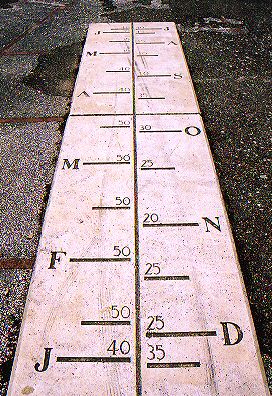 The dial is of considerable size: the major axis is 12 m (40 ft). The hour numbers protrude clearly from the dial face and run all the way around the ellipse. Local time is indicated by twice the numbers I to XII. The foci of the ellipse are marked by metal pegs.
The dial is of considerable size: the major axis is 12 m (40 ft). The hour numbers protrude clearly from the dial face and run all the way around the ellipse. Local time is indicated by twice the numbers I to XII. The foci of the ellipse are marked by metal pegs.
The date line has been engraved in a smooth marble plate. The marks are drawn at the first and the 15th of each month. Next to the marks are the combined corrections for the equation of time and the longitude difference, rounded to a multiple of 5 min. Clever!
Such a smooth slab is also very handy to test the brakes of your motorbike.
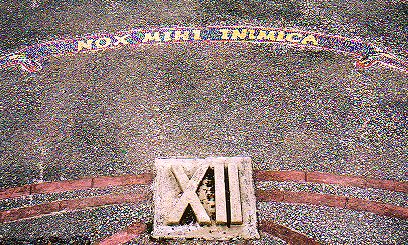
The motto is contained in a banner above the northern 12 hr point, laid in a lovely mosaic. It reads: Nox mihi inimica. Is that Latin, or what? The folder leaves us ignorant.
Then there is the world map, also in an elliptic enclosure, which does not coincide with the ellipse of the hour points, however. The continents are done in a darker shade of concrete. The meridians are drawn per 45° and the parallels per 30°. Below is the plan as it appears on the folder.
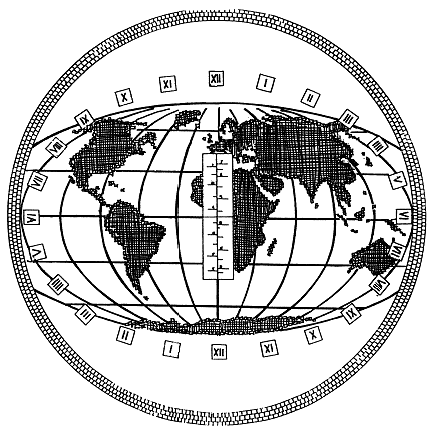
The folder finally denotes the dial as a diagram of astronomical data:
There is a stand for an information panel here (on the top picture, in front of that tall tree) but the information itself has gone. And that tall tree, well, it certainly gives lots of nice, cool shadow on a hot summer day...
Location: 47.4° N, 5.6° E
Design: Maurice Heriau, Dijon
Inauguration: ca. 1988
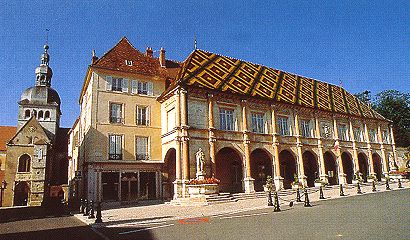
We discovered two more dials in the city center: a meridian dial high at the side façade of Notre Dame basilica and a vertical dial at the city hall, above the statue.
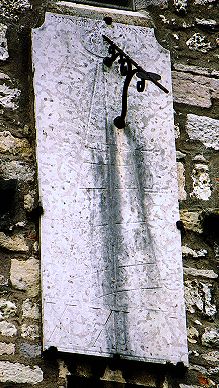 |
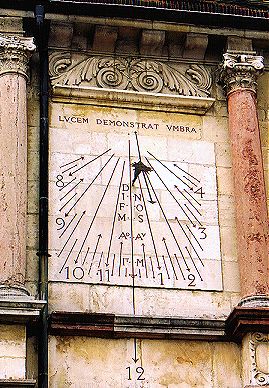 |
The inscription on the meridian dial reads: Jeunet à Auxonne and the date is 1836. Auxonne is a village 35 km (22 ml) southwest from here.
The city hall displays a large vertical dial with a node on the pole-style. Time marks (local time) per quarter of an hour. The equation of time is indicated by points around the noon line, identified by the initials of the months. J is written as I. IT stands for Juillet (July), Av for Avril (April), Ao for Août (August).
The foot of the pole-style should be on the noon line. And the style is bent a little.
Gray is located some 45 km (30 ml) east of Dijon, on the banks of the Saône river.
Websites: City of Gray, Gray Tourism